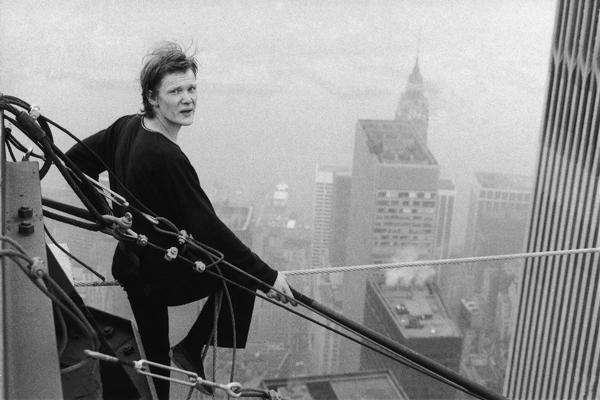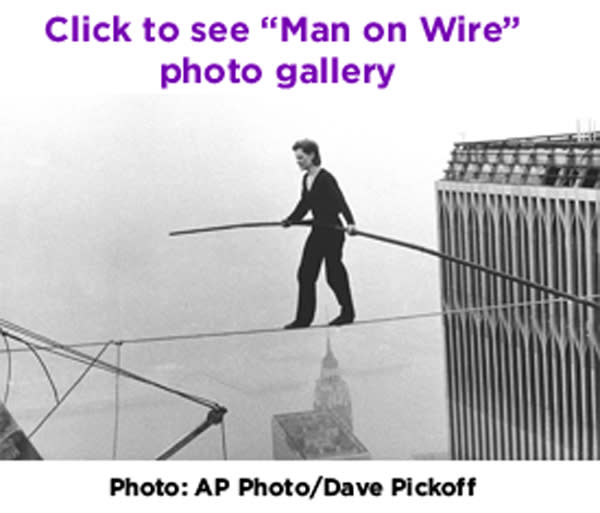 The Upshot
The Upshot“Man on Wire” remembers twin towers

In August 1974, the still unfinished twin towers, at some 1,350 feet, were the tallest buildings in the world. The architectural monument inspired one daring young man, Philippe Petit, to commit what he called the "artistic crime of the century." The tightrope artist stepped out onto an illegally rigged wire 110 stories up, stretching 200 feet long between the two towers -- and essentially danced high above the street for almost an hour.
The film "Man on Wire" tracks Petit as he recounts his audacious plans to walk between the two towers on a tightrope, and follows this highly dangerous, and highly illegal, feat. (The title is the description on the police report.) To Petit, the twin towers were his plaything. Ten years after the towers came down in the Sept. 11 attacks, the film is an homage to the buildings that became part of the New York City skyline years ago -- and that are now gone. Interviewed recently for his one-man show of his life story, Petit said that the towers still exist -- in his mind. "I don't see time begin and end. In my head, the twin towers are still alive."
"On the subject of the towers disappearing, of course it was an immense -- sadness is not the word -- it was something alive that was pulled out of me," he said. Years after the attack, he holds onto that 1974 memory. "Nothing can change that. The memory of this adventure is an intimate, romantic, poetic, joyful feeling that will continue...for the rest of my life."
The award-winning documentary, which does not reference the attacks, unfolds like a suspenseful thriller rather than a staid recounting of the facts. The high-wire act, which took six years to plan, was done in secret, the walk itself a crime. The performance was a once-in-a-lifetime event that stopped traffic around the World Trade Center and made headlines around the globe.
While essentially a benign act 37 years ago, it is hard not to watch the movie without thinking about how different the world is now. The Frenchman's team, as the Telegraph notes, "observes the buildings relentlessly, recruits assistants, builds models, collects documents, [and] notes security patrol routes and codes." These men on a mission were crazy, but they were artists, not madmen.
Still, with nothing but their wits, the group is easily able to walk into the north and south towers dressed as deliverymen and executives (using fake IDs), and somehow sneak in a disassembled balancing pole, wire for rigging, 250 feet of one-inch braided steel cable, and a bow and arrow. The comrades hide on the top floor. The all-night setup begins, which involves shooting the wire from one building to the other with the bow and arrow. Around 7 the next morning, Petit stepped off the south tower onto the wire.
After Petit finally came down from the tightrope (unharmed), he was arrested, jailed, taken for a psychological evaluation, and released. Journalists asked the performer why he did it. The then 24-year-old responded, "When I see three oranges, I juggle. When I see two towers, I walk."
Thanks to "Man on Wire," we can see the twin towers again, too.
Share your 9/11 memories with us on Twitter - #911remembered


